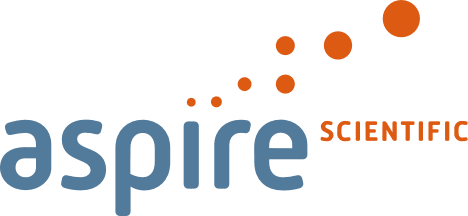The 2024 European Meeting of the International Society for Medical Publication Professionals (ISMPP) was held in London on 23–24 January. The meeting, which was themed ‘Innovation: The New Tradition’, saw a record 395 delegates in attendance.
A summary of the second day of the meeting is provided below to benefit those who were unable to attend the meeting, and as a timely reminder of the key topics covered for those who did.
Summaries of Day 2
Day 2 opened with parallel sessions, with attendees each having the opportunity to select 2 sessions to attend.
Parallel session: From blue sky to bottom line: getting innovation off the ground
KEY TAKEAWAY
- When working on innovative projects, it is important to plan ahead, consider longer term budget and time implications, establish a target audience early, and ensure there is effective communication between multidisciplinary team members.
In the first session of Day 2, Andrew Xia (Takeda) and Petrina Stevens (AstraZeneca) shared experiences from recent innovative projects they were involved in.
The use of AI methods
Xia described a collaborative project between Takeda and the Massachusetts Institute of Technology (MIT) aiming to automate systematic literature reviews using artificial intelligence (AI) to speed up the process and reduce human errors.

Developing innovative processes is highly labour intensive and requires high levels of expertise.
They evaluated 2 different large language models (LLMs): BiLSTM and BERT, and assessed the performance of each model by calculating F1 scores (a dual measure of precision and recall). Two different systematic literature review projects were used to test the models, with the main goals being to correctly identify entities (eg, drug names) and their relations within the text. The pre-trained BERT model with a Conditional Random Field (CRF) had the highest F1 score and was particularly good at identifying entities such as age, but not as good at identifying less standardised entities such as treatment arm dosages.
Xia concluded that, with refinement, machine learning could be used to assist with human extraction of data from scientific literature, reducing the workload and timeframe for systematic literature reviews. However, performance varied between different entities, and Xia emphasised that we cannot currently rely upon AI without human input.
Reflecting on the challenges of developing innovative solutions, Xia noted the process was highly labour intensive and required a high level of expertise to complete. Early alignment on a target audience was important when collaborating with a multidisciplinary team, as was regular communication. Xia also noted the need to consider the budget implications associated with these tools over a period of several years.
The importance of patient engagement
In the next presentation, Petrina Stevens began by noting the landscape shift in engaging patients across drug development, driven by the need of regulators, payers, healthcare professionals (HCPs), and patients themselves to understand the patient experience.
The goal of patient-centric medical strategy is to learn from patients and caregivers to inform the science so that it can change lives.
Having assessed previous patient authored publications, AstraZeneca identified a clear need for a framework for patient involvement to address barriers including:
- lack of a defined process
- a perception of complexity
- difficulty measuring impact
- relevancy to projects.
AstraZeneca’s patient engagement and publications teams developed a Patient involvement in Publications (PiiP) framework providing detailed guidance and processes for partnering with patients. The framework also includes a resource toolkit to help identify the right publications for patient involvement and find the right patient authors and patient reviewers.

The 5 guiding principles of the PiiP framework are:
- Plan early: it takes time to identify, contract, and conduct activities with patients
- Remuneration: patient authors are not compensated, but patient reviewers may receive payment
- Authorship criteria: patient authors must satisfy ICMJE authorship criteria
- Data privacy: naming a patient author may (unwantedly) associate them with the condition or treatment
- Global and local processes: the framework reflects global processes but should be widely applicable across the company
The framework has been integrated across AstraZeneca to help improve early patient involvement in publication planning processes, identify and work with patients, enhance patient communications, and support medical strategies. It has been accessed over 750 times by AstraZeneca employees since its launch in April 2023.
To ensure successful innovation, Stevens reiterated the importance of early planning and apportioning sufficient time and resources. As noted earlier by Xia, Stevens agreed that early alignment on key considerations – such as compliance and data privacy in the case of the PiiP framework – was important, requiring an awareness of the cross-functional contributions of all involved parties.
Parallel session: Stakeholder compensation for services in the evolving publications landscape
KEY TAKEAWAYS
- It is important to have clear demarcation between voluntary unpaid authorship and compensated publication services.
- While GPP 2022 suggests that salaried employees are not disqualified from authorship and reimbursement for time is permitted, several areas still need clarification.

In this parallel session, John Gonzalez (Solanum Medical Communications Ltd), Siobhan Southam (Mundipharma), and Veronica Porkess (UCB Pharma) discussed the challenges of navigating compensation in the evolving publications landscape. Gonzalez began by stating some key principles relating to authorship and compensation:
- authorship is voluntary and unpaid
- all authors should be treated equally
- all authors should fulfil authorship criteria; there is no room for guest authorship
- clear demarcation is required between authorship and compensated services
- compensation should be reported to ensure transparency.
Publication advisory boards and steering committees
The first of 3 areas for discussion was compensation for participation on advisory boards and steering committees. Gonzalez reviewed guidance from the Prescription Medicines Code of Practice Authority (PMCPA) and the GPP 2022 guidelines, highlighting the challenges in separating compensation provided for expert advice from discussions around authorship and content, given many expert members would likely be study investigators with potential authorship eligibility. In the case of advisory boards, potential solutions to address this challenge included separation of publication authorship and content discussions, and proactive management of expectations relating to compensation, with clear distinction made between advisor and authorship roles. For steering committees, solutions included implementation of a publications steering committee charter, kick-off meetings to discuss publication content, and scheduling meetings for uncompensated activities virtually or at congresses to avoid transfer of value reporting/travel reimbursement.
Collaborations with patients
Southam then looked at the evolving area of patient collaboration, highlighting the recent change of guidance within GPP 2022.
“Salaried employees are not disqualified from authorship, reimbursement for time permitted, especially steering committee members, patients, patient advocates.” – GPP 2022 Guidelines
The divergent approaches taken by different companies in response to the GPP 2022 guidance on compensation of patients or patient advocates for publication-related activities was discussed, alongside concerns regarding the potential for any relationship between patients and pharma companies to be perceived as commercially motivated, as noted in the European Federation of Pharmaceutical Industries and Associations (EFPIA) guidance on working together with patient groups.
Drawing upon personal experience, Southam noted a general approach to reimburse patients if it would be appropriate for an HCP, and highlighted several key questions for further discussion:
- How do we differentiate ‘publication activities’ from ‘authorship activities’?
- Is all patient collaboration the same?
- Are there risks associated with paying patients for authorship?
- What compliance issues, codes, and regulations do we need to consider?
Vendors working on real world evidence publications
Finally, Porkess considered the complexities of compensation for vendor publication-related services, with specific reference to real world evidence publications. Using two fictional case studies, Porkess highlighted the GPP 2022 guidance on authorship and compensation for publication-related activities that states that paid employment in a role contributing to study conduct, analysis, or publication development does not disqualify a person from authorship. This led to a discussion on direct versus indirect payments and raised several questions, including:
- How do we define payment for writing versus payment for authorship? What is the cut-off?
- When does payment for writing become payment for authorship?
Summarising the discussion, Porkess considered when it might be appropriate for someone to receive payment for writing and also be an author of a publication:
- Not appropriate: HCPs and scientists
- Grey area: consultants, patients, patient advocates
- Appropriate: pharma employees, medical writers, data analysts
Parallel session: Making an impact: what does success look like in publications?
KEY TAKEAWAY
- Generative AI will change how we measure the success of a publication, with new tools able to accurately predict the impact of a manuscript before it is even written.
In this session, the success of publications was discussed from the publisher, pharma, and agency perspectives, with consideration of how AI has the potential to change these perspectives in coming years. Martin Delahunty (Inspiring STEM Consulting) started by defining success as a combined measure of engagement (or worthwhile interactions with people) and impact (or influence). He explained that impact can be measured on 3 different levels, with each of the current metrics having limitations:
- journal: including Impact Factor, journal category rank, and CiteScore
- article: including citations, social media mentions, page impressions, and downloads
- author: including h-index, g-index, and i10-index
Delahunty went on to highlight that the Altmetric Attention Score now has a dashboard specific for pharma-sponsored publications, which incorporates a Dimensions database to provide a highly visual set of metrics. Meanwhile, PlumX Metrics, which has clinical, patent, and policy citation categories that help demonstrate the societal impact of a research output, now includes policy citations to journal articles from Overton. Delahunty ended by discussing the recommendation by the Declaration on Research Assessment (DORA) to move away from journal-based metrics such as Impact Factor and focus instead on a more diverse range of building blocks for impact. He gave a brief summary of the EMPIRE Index, a new metric framework for medical publications that provides social, scholarly, and societal weighting and may represent a more well-rounded impact score.

“(Success in publications) is a combined measure of engagement and impact.”
Anisha Mehra (Ferring Pharmaceuticals) explained that from the publications manager perspective, the holy grail of measuring publication impact is the number of insights that are used to inform medical strategy. To get to this point, there is a need to influence decision-making and outcomes by reaching the correct stakeholders.
Belinda Dean (Porterhouse Medical) said that agencies, being the middlemen between authors and clients, balance success of publications based on the priorities of both parties. Key factors for authors are journal selection, quality, and timelines. For clients, the metrics that measure success need to align with their business and strategic objectives. Agencies work to ensure that the needs of both sides are met, while also ensuring adherence to guidelines and timelines, a compelling narrative, high-quality writing, and client and author satisfaction (to secure repeat business). Of note, as each publication is different, with unique objectives, the measure of success needs to be adapted accordingly.

As each publication is different with unique objectives, the measure of success needs to be adapted accordingly.
Finally, Colin Baughman (JPA Health) talked about how the next generation of publication planning will leverage technology and AI. He suggested that AI and other modern technologies will change the paradigm in coming years, allowing us to not only predict a publication’s impact but also adjust factors to influence impact accordingly. He explained that while PlumX and altmetrics, the current standard for measuring impact, are useful, they are also reactive. Thus, the future of publications success will be to impact this in advance. Baughman provided a few broad examples of how generative AI and natural language processing will assist with the assessment of HCP knowledge, topic novelty, centrality, and aggregation of a high volume of traditional metrics. All of these tools combined will enable the prediction of impact. Baughman also pointed out that the future is not far away. For example, he believes that medical publications professionals will be widely using Google’s Med-PaLM – a medical domain LLM that has ‘passed’ the US Medical Licensing Examination – within the next 2 years.
Sprint activity: Reimagining the publication process to make it 2023 ready
KEY TAKEAWAY
- Publications professionals should work together to identify opportunities for future improvements to the publications process and consider how these improvements can be implemented.

In the first of 3 collaborative, workshop-style sprint sessions, Simon Foulcer (AstraZeneca) and Helen Chambers (Costello Medical) steered participants through a 3-step exercise focused on revamping the publication process as we know it. Delegates worked in groups to tackle different areas of the publication process, from data mapping and planning, through to the final publication. Delegates firstly identified key areas of the publication process that pose challenges and are therefore ripe for innovation, before moving on to defining what excellence would look like in those areas, and what changes/innovations are needed to move towards this vision of excellence. The session was intended to act as a springboard for future discussions and innovation, in service of the long-term goal to move the medical publications industry forward and making it fit for 2030.
Sprint activity: Establishing best publication practices for pharma–non-pharma collaboration
KEY TAKEAWAY
- Effective collaboration between pharma and non-pharma stakeholders is important for publication activities, and sharing experiences can help improve collaboration.

During this sprint session, Russell Craddock (Parexel), Ceinwen Giles (Shine Cancer Support), Alessandra Bittante (AstraZeneca), Jodi Cusack (Ipsen), Trishna Bharadia (Patient Engagement Champion & Health Advocate), and Jakki James (Parexel) guided participants through an activity aimed at establishing best practices for collaboration between pharma and non-pharma stakeholders. These collaboration efforts are particularly important for publications activities, and participants discussed the types of non-pharma stakeholders who should be involved, best practices to promote collaboration, and areas for improvement within the industry. The workshop allowed experiences of collaboration efforts from different individuals across the industry to be shared, with a view to generating a standardised framework of best practice to use in the future.
Sprint activity: How do we strengthen the position of publications as a trustworthy source to all audiences?
KEY TAKEAWAY
- There is a need for changes to both the peer review process and the use of post-publication metrics to help strengthen the credibility of publications.

In the third sprint session, Priti Nagda (Taylor & Francis), Simon Stones (Envision Pharma Group), Jonathan Patience (Taylor & Francis), Catherine Elliott (Envision Pharma Group), Mithi Ahmed-Richards (Taylor & Francis), and session participants explored potential barriers to public trust in publications and ways to increase trust. Participants worked in groups and focused on 1 of 2 key measures of credibility: peer review and post-publications metrics. Those focusing on peer review were encouraged to come up with innovative ways of ensuring that this process truly evaluates the quality and reliability of research. Discussion topics were wide ranging and included reviewer fatigue, reviewer bias, training and accreditation for reviewers, and the inclusion of patients as peer reviewers. The groups focusing on post-publication metrics agreed on the need for the standardisation of these measures across journals and proposed that ISMPP issue a call to action on this topic. Other discussion areas included an educational campaign to raise awareness and understanding of different metrics, the importance of evaluating the quality as well as the volume of conversations, and how to measure trustworthiness. The workshop allowed ideas to be shared between individuals across the medical communications industry, and participants were encouraged to continue their engagement with this important topic.
Member research oral presentations
Accurate COnsensus Reporting Document (ACCORD) checklist: a reporting guideline for consensus methods
KEY TAKEAWAY
- ACCORD, the first reporting guideline for consensus-based studies, is now published and available for use.

In a session moderated by Andy Shepherd (Envision Pharma Group), Niall Harrison (OPEN Health Communications) introduced the Accurate COnsensus Reporting Document (ACCORD), the first reporting guideline for consensus-based studies. The checklist was developed over the last 3 years, with full endorsement by ISMPP, and the final product was published in PLOS Medicine in January 2024. Development of the guidelines was led by a steering committee of publications experts from diverse backgrounds and 58 panellists underwent 3 rounds of anonymous voting and commenting. The final checklist of 35 items was narrowed down from an initial list of 56 potentially relevant items identified during a systematic literature review. While 21 of the 35 items included in the checklist relate to the Methods section of the manuscript, more than in any other existing reporting guidelines, over 70% of people surveyed felt that ACCORD was less complex than the CONSORT, STROBE, or PRISMA reporting guidelines. As such, Harrison and colleagues hope that this new guideline will improve completeness and transparency when reporting consensus studies.
Customising patient communications through quantitative and qualitative insights
KEY TAKEAWAY
- Use of an omnichannel approach and tailored communications/content can reach patients more effectively, helping to improve shared decision-making and patient outcomes.

In the second member oral presentation, Kris Schuler (Pfizer) described a multi-step pathway used to optimise patient communications in the oncology space, based on patient preferences. Initial engagement with broadly-focused patient steering committees (Pfizer Oncology Patient Centricity Ecosystem (POPCE)) was used to identify health literacy barriers affecting patient care, followed by a specific focus on optimising time to treatment for patients with prostate cancer. Following identification of challenges in the treatment journey, patient populations were prioritised and aligned on healthcare and consumer attributes, and claims and consumer data were integrated using machine learning models, with clustering analysis used to identify 4 key patient profiles. Patient profiles were validated and 2 profiles, ‘accessibility-challenged traditionalists’ and ‘under-served digital wizards’, were selected for assessment and development of targeted omnichannel plans due to significant unmet needs and a large potential for change. An additional pan-oncology survey was utilised to assess patient and caregiver perceptions of enhanced publication content (EPC), with 92% of patients reporting that they would share EPC with their treating physician; plain language summaries (PLS) and videos were deemed most useful. Following further patient feedback on PLS, 7 health literacy resources were developed to support patients:
- Understanding the clinical trial process
- Navigating clinical trial information websites
- Four tips for finding medical information online
- How to read an abstract for a clinical trial publication
- Common terms used in abstracts/research articles for clinical trials
- Abstract PLS at scientific congresses
- The basics of medical meetings.
Seeing it in the Flesch: comparing readability between AI-generated and human-written plain language abstracts
KEY TAKEAWAY
- PLS generated by a bespoke AI system are easier to read than those written by medical writing professionals.

David McMinn (Sorcero) and colleagues investigated whether using bespoke AI approaches to generating PLS could improve quality, readability, and accessibility of PLS. This is a subject of considerable interest, with a recent survey showing many readers cannot reliably distinguish between healthcare text written by a human or by AI.
In their study, 1 of 3 posters selected for presentation as a member research oral, they compared readability scores, such as Flesch-Kincaid, and population-level accessibility of AI-generated versus published human-written PLS. PLS were identified via PubMed, and the scientific abstract from the original publication was used to auto-generate a PLS using AI. The original and AI-generated PLS were then compared using readability metrics, accessibility, reading time, and subject matter expert assessment of quality.
Overall, AI-generated PLS were easier to read than the human written equivalents and are therefore accessible to a larger proportion of the population (~50%) than human-written equivalents (~12%) and the scientific abstract (~1%). Using a second AI approach, and following optimisation, >75% of AI-generated abstracts were rated as ‘good’ by subject matter experts.
In conclusion, the authors showed that PLS generated using bespoke AI processes are easier to read and more accessible than those written by medical professionals. Whether use of such generative AI tools saves time and produces content that is preferred to human-written PLS by end-users is the subject of ongoing research.
Innovation meets tradition: the future of publication extenders
KEY TAKEAWAY
- A more strategic and comprehensive approach to publication extender strategies is needed.
The volume of medical materials being published every day is enormous, with a new publication emerging approximately every 26 seconds. Furthermore, HCPs are increasingly prioritising digital content, creating ever greater opportunities for article extenders as short-form learning materials. In this plenary session, a 4-part plan aimed at bridging the gap between ad hoc creation of publication extenders and the needs of the HCP community was presented.
Wesley Portegies (MedComms Experts) kicked off the session by emphasising the need to use article extenders in a much more holistic way, and to better align them with audience requirements. Illustrating this point, Kris Schuler (Pfizer) continued by presenting data showing that information overload is rife in medical communications. She reported that enhanced publication content results in a 2-fold increase in engagement with data; however, she also noted that extenders have to be used strategically. The first step of developing a publication extender strategy is to define the intended audience using ‘personas’ – a day-in-the-life representation of demographic, behavioural, and psychotropic information about a particular audience: who they are, what they do, what they think, what their pain points are.

The first step of developing a publication extender strategy is to define the intended audience.
Strategic approach to publication selection
Continuing the theme of using a holistic approach to developing article extenders, Louise Ostergaard (Novo Nordisk) described how to build a strategic key messaging framework for publication extender selection using input from personas, scientific platforms, and the publication plan. The steps include:
- Strategic imperatives: choose 4–6 key messages using cross-functional input
- Rank key messages: focus on specific needs for upcoming events
- Assess publications: which publications will address these key messages?
- Prioritise publications: which publications are important?
Once identified, Ostergaard explained that a grading system should be used to assign value to each article extender to determine their individual importance within the overall strategy.
Optimising reach and engagement
Discussing how best to optimise reach and engagement of extenders, Ostergaard recommended that companies showcase their publications using an external facing platform that hosts publications, congress materials, and article extenders all in one place. Search optimisation is also key to enable HCPs to find the right information quickly and easily. Ostergaard explained that social media can be difficult for pharmaceutical companies due to compliance considerations, but noted that the younger generation will be using social media more and more to inform themselves, making signposting data back to the original publication advisable. Lastly, Ostergaard described the use of a modular library of multichannel extenders that can be mixed and matched, with different elements removed, tailoring the extender content to the target audience.
Collecting meaningful metrics
In the final part of this plenary session, Portegies posed the question: how do we know if extenders are impactful? As yet, a single metric system for extenders does not exist, but Portegies suggested the GAME framework could be used to set metrics for article extenders:
- Goals: set specific goals; why are you measuring metrics?
- Actions: what are the actions you expect your audience to take, for example, would you expect a reader to share information?
- Metrics: what are the metrics that can turn qualitative actions into quantitative values?
- Evaluations: how impactful is your article extender?

A single metric for extenders does not exist, but the GAME framework could be used to set metrics for article extenders.
Portegies then stated that metrics do not work as standalone values, rather, it is the combination of metrics that is useful to evaluate impact. The future for this area may be metric dashboards, with the ultimate aim of a constant real-time stream of data reporting on how your content is performing.
Innovation in medical communications and publications through generative AI
KEY TAKEAWAYS
- Medical communications companies and agencies should embrace AI at a level they are comfortable with or risk falling behind.
- The generative AI future can be exciting if taken one step at a time.
In the final plenary session of the 2024 European Meeting of ISMPP, Richard Graves (Sorcero), Matthew Lewis (Inizio), Valerie Moss (Prime Global), and Jenny Ghith (Pfizer) discussed the hot topic of generative AI and its growing application within medical communications.
Understanding which AI tools to use
The first discussion centred around which AI tools are the best to use in medical communications. The panel highlighted that it is imperative to use the right tool for the right job, whether this be a model trained on the entire internet database, a more tailored model trained with private data, or a completely open source tool, such as Hugging Face. Key questions to answer when choosing an AI tool included:
- What kind of data did the model ingest – is it structured or unstructured data?
- How was the model trained?
- Does the model have a custom user interface, or does it need to be built by the user?

It is imperative to use the right AI tool for the job – consider the kind of data on which the AI is based, how the AI was trained, and how the user interacts with the AI.
Challenges to AI innovation
On the topic of innovation in AI, Lewis thought the biggest challenge was not necessarily coming up with new breakthroughs, but rather the dissemination of innovations. He believes it is the responsibility of the life sciences to facilitate collaboration to allow diffusion of innovation. This section ended with a call to action for collaboration between AI developers and sharing of AI data to enable better outcomes for patients.
A brief history of AI literature searching
Following on from this discussion, the panel were asked what it means to pull information from the literature and to generate something new. Since the first AI tools appeared, the technology has developed to a level where they are now able to answer questions, extract key terms, perform semantic analysis, and perform more sophisticated searches for more relevant information. Generative AI can also tailor these searches to an individual’s needs – all features which are potentially transformative in medical communications. The panel’s message was for everyone to learn what tools are available and what is possible within these platforms to transform your day-to-day life!
The advent of living publications
The next topic to be discussed by the panel was that of ‘living publications’, where models such as Gemini (Google) can take existing scientific publications, turn them into code, replicate the studies, and extend the data sets. In the future, it may be possible to update publication data in real time, updating outputs on a publication ‘dashboard’, keeping the publication alive and relevant even after it has been published. The panel noted that the danger with this approach is that although AI capabilities are extraordinary, it is vital to always check the outputs carefully, as omissions and oversimplifications can occur. The panel also made it clear that any confidential data should not be entered into the platforms.
Individual responsibility
One of the last topics to be discussed was how organisations and individuals can adopt AI in their working lives. All organisations should be having conversations about ethics, technology, and compliance, and agencies need to be embracing and utilising AI within their own level of comfort. From an individual perspective, medical writers can take ownership of nearly every part of the ISMPP position statement on AI, including disclosing the use of generative AI in written work and validating AI generated content, ensuring there are no errors, compliance, or copyright issues.

The best way to learn about AI is to use it.
The panel concluded by discussing the key benefits of generative AI, namely increased speed, higher quality of work, as well as more comprehensive access to data sets. The panel felt that the limitations of AI are mostly human factors, for example, employers choosing not to progress or companies choosing not to share data and innovations. The generative AI future can be exciting if we each decide our individual level of comfort, prioritise what will be the most impactful uses, and take it one step at a time.
Poster awards, exhibitor raffles, and closing remarks
Matt Booth (ApotheCom) closed proceedings, reflecting on the meeting theme of innovation, collaboration, and evaluation, before announcing and congratulating this year’s poster prize winners:
- Most reflective of meeting theme: Influence of metrics and enhanced content on healthcare professional engagement with publications – Sarah Clements, Alexa Holland, Erin Clarkson, Clair Osgood, Oliver Palmer, and Hamish McDougall.
- Best original research: The ACCORD guideline for reporting consensus methods: results of an implementation study – William Gattrell, Patricia Logullo, Amy Price, Marcus Gbekle, Brian Alper, Emily Bruggerman, Vandana Chaudhary, Bert Yu-Hung Chen, Gwendolyn Elphick, Aisling Dixon, Silvia Maina, Susan Martin, Debora Mesojedovas, Dhanya Mukundan, Chona Patalen, Sangita Patil, Meenakshi Subramanian, Lin Wang, and Niall Harrison.
- People’s choice: Using machine learning to explore social media engagement with medical publications – Adamos Spanashis, Nicola Lazzarini, Avgoustinos Filippoupolitis, Helen Stewart, and Simon Francis.
In closing, Booth thanked the programme committee, sponsors, partners, and exhibitors; encouraged attendees to look out for upcoming ISMPP University webinars and new episodes of the InformED podcasts; and ended by noting that registration is now open for the 20th Annual Meeting of ISMPP, to take place on 28 April–1 May 2024 in Washington, DC.
Written as part of a Media Partnership between ISMPP and The Publication Plan, by Aspire Scientific, an independent medical writing agency led by experienced editorial team members and supported by MSc- and/or PhD-educated writers.

